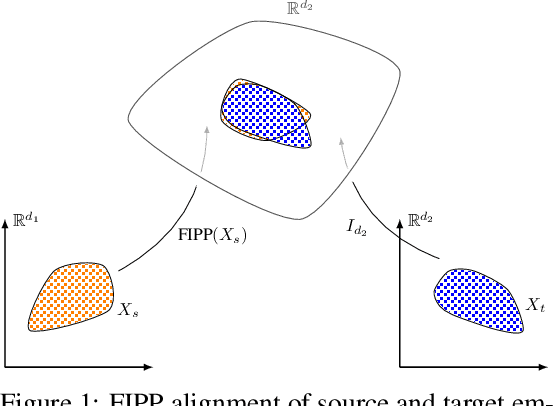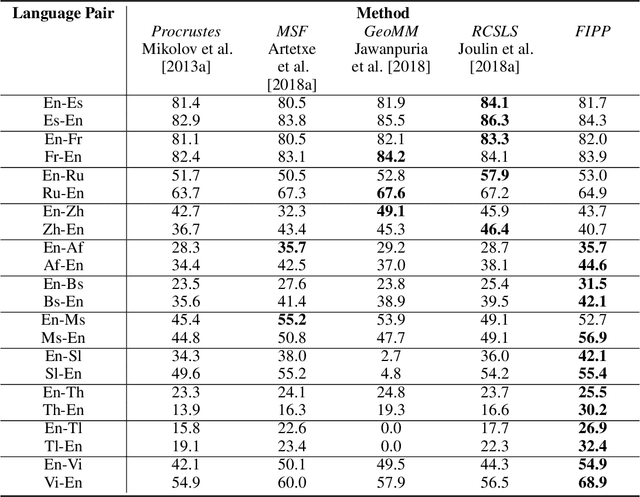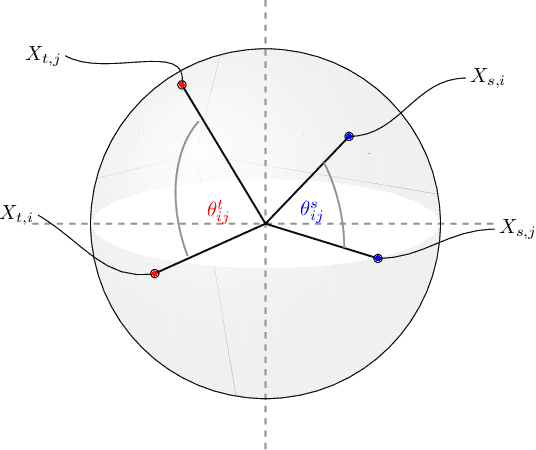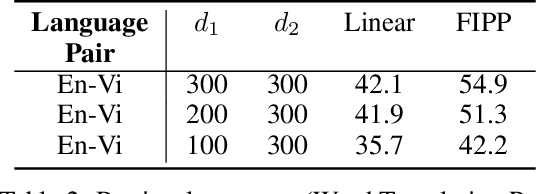Filtered Inner Product Projection for Multilingual Embedding Alignment
Paper and Code
Jun 05, 2020



Due to widespread interest in machine translation and transfer learning, there are numerous algorithms for mapping multiple embeddings to a shared representation space. Recently, these algorithms have been studied in the setting of bilingual dictionary induction where one seeks to align the embeddings of a source and a target language such that translated word pairs lie close to one another in a common representation space. In this paper, we propose a method, Filtered Inner Product Projection (FIPP), for mapping embeddings to a common representation space and evaluate FIPP in the context of bilingual dictionary induction. As semantic shifts are pervasive across languages and domains, FIPP first identifies the common geometric structure in both embeddings and then, only on the common structure, aligns the Gram matrices of these embeddings. Unlike previous approaches, FIPP is applicable even when the source and target embeddings are of differing dimensionalities. We show that our approach outperforms existing methods on the MUSE dataset for various language pairs. Furthermore, FIPP provides computational benefits both in ease of implementation and scalability.
 Add to Chrome
Add to Chrome Add to Firefox
Add to Firefox Add to Edge
Add to Edge